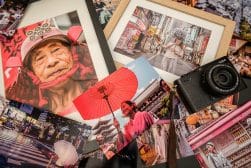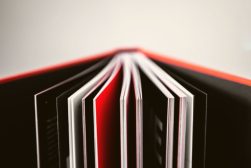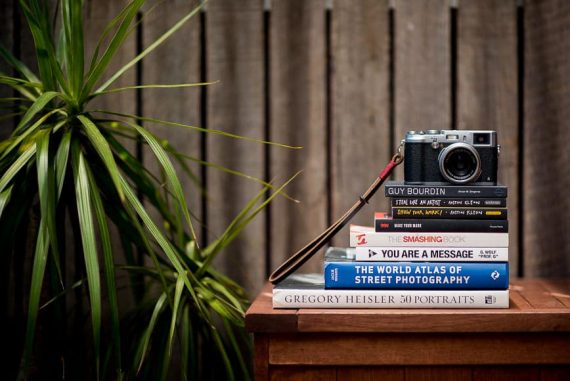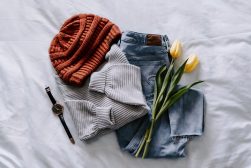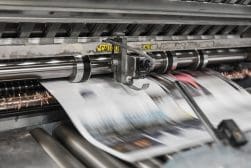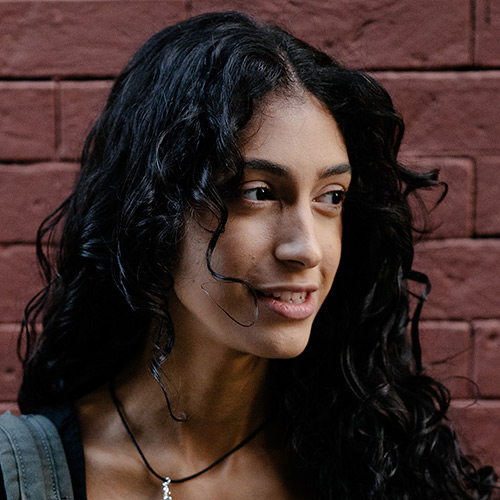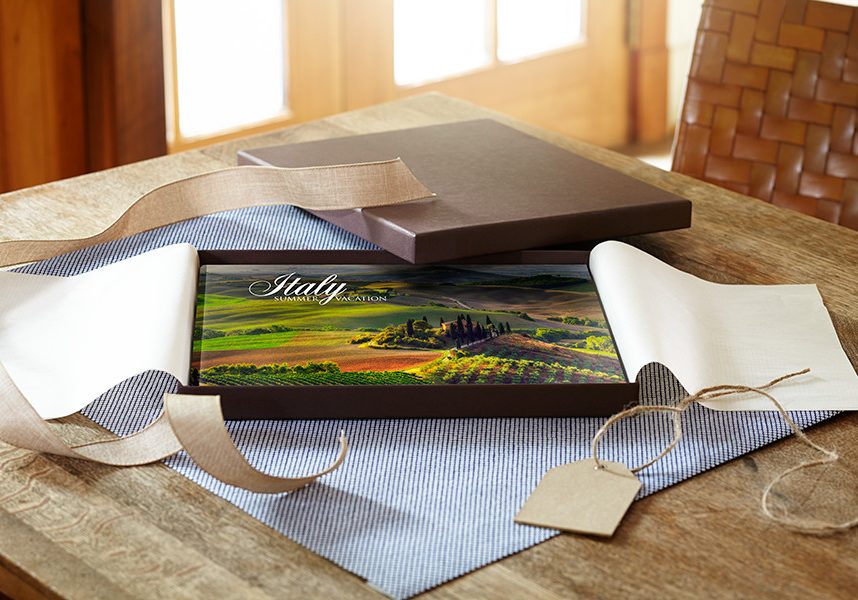
How to Choose the Best Paper for Photo Books in 2024
Choosing the best paper for your photo books isn't as simple as you think. Check out our guide that will help you make the right decision every time.
Learn | Printing Guides | By Usnea Lebendig
Choosing the best paper for photo books isn’t always easy, especially with so many different types to choose from.
Not only are there a number of different coatings, but there’s also the question of how durable the paper is, how true to color, and of course, the cost.
Unfortunately, there is next-to-no consistency found among the different photo book printers, and some companies aren’t so forthcoming on what exact paper they’re using.
So how do you choose the best paper for your photo books?
In this post, we’ll explore the most common photo book paper options and how to select the right one, as well as list some of the top companies for making custom photo books.
Let’s get started.
Photo Book Binding
The type of photo book binding you choose will have a strong bearing on your paper options.
There are two main types of binding when ordering photo books: perfect binding and lay-flat binding. Each has its pros and cons.
Perfect Binding
Perfect bound books are the most common, both in terms of photo books and in regards to books in general. It’s a method that uses glues to attach the pages to the book spine, with the cover being part of the spine.
Perfect bound books tend to use the thinnest papers, as these are more economical and attach more easily to the spine.
In terms of paper thickness, this will be between 54-135 lb (80-200 gsm – where 80 is similar to standard home printer paper and 200 resembles a business card in thickness. See the section on paper thickness below).
Many find perfect bound books aesthetically pleasing and professional looking. They are also easier on the wallet, costing considerably less than other options.
In terms of showcasing photography, however, perfect bound books have one large drawback: they don’t lie flat when opened. Not only will your images not present fully, but if you happen to want an image to take up two pages facing one another, part of that image will disappear into the binding.
With some photo book companies, a perfect bound book may be the only option.
Lay-Flat Binding
Lay-flat books do just what their namesake suggests: they open fully and lay flat. This makes it easier to publish wide-angle and/or panoramic images across both halves of the spread.
Because they open fully, lay-flat books are much easier to use and enjoy – especially when it comes to viewing images.
Lay-flat tends to be better suited to larger books, wedding albums and coffee table books.
The feel of the paper in lay-flat books will be much thicker than in perfect-bound books. This is because the pages are printed as double spreads and then stuck together. The end result creates a heavier, more substantial page that feels luxurious.
Companies that feature lay-flat books (such as Printique) will usually only offer photo paper to go with them.
Standard Paper vs Photo Paper
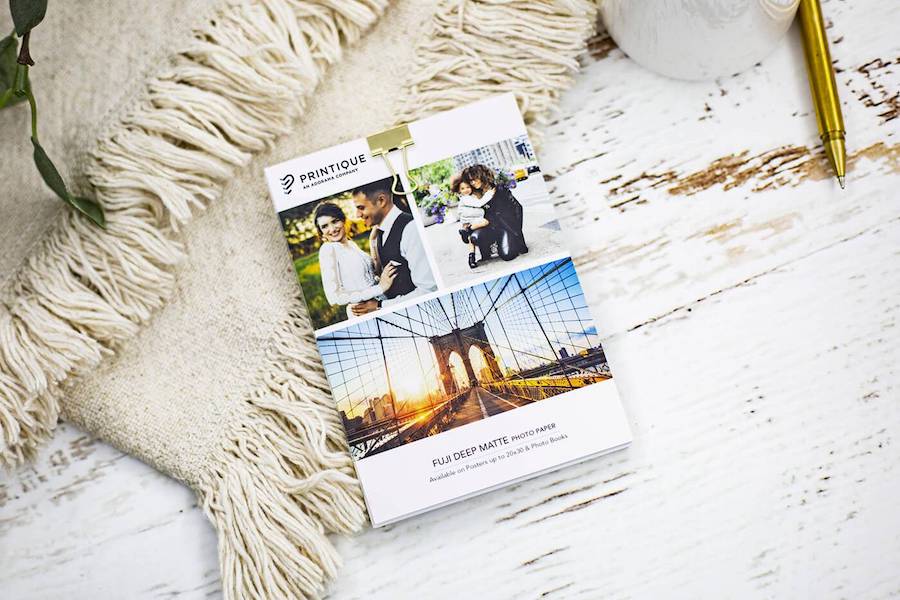
Standard Paper
Standard paper is the most versatile of all paper types and can be used for just about any project.
How Much Do You REALLY Know About Photography?! 🤔
Test your photography knowledge with this quick quiz!
See how much you really know about photography...

It’s generally offered in a satin/silk finish and is digitally pressed (images are reproduced by means of applying ink to the paper, not through a photographic process).
The most common standard paper available for photo books is generally around 100 lb in weight. Since 100 lb standard paper isn’t quite as robust as thicker papers, you’ll likely see some bleed through, but not so much so that it’s distracting.
Of course, it all depends on what type of coating is used – in some cases, a thinner paper with a strong coating can function as well as a thicker paper. If bleed-through is a concern, however, then it might be best to upgrade to a thicker paper.
Unfortunately, not all companies offer more than one type of paper, but many do, and this includes upgraded (i.e. thicker) versions of standard paper.
Another downside to digitally-pressed (i.e. standard) paper is that, because it uses ink to put the image on the page, it’s restricted to the CMYK color space which is more limited than RGB.
While today’s technology can really turn out some incredible digitally-pressed image reproduction, the colors still won’t be quite as true as when using photographic paper.
Note: Standard paper will be the default for any perfect bound photo book.
Photo Paper
Photographic paper uses an entirely different process for getting an image onto a page.
Photo paper is similar to film – it’s sensitive to light and has a special resin coating designed for images.
First, the paper is exposed to light inside the printer to produce the image. Next, just like with film, chemicals are used to “set” the image and eliminate the light sensitivity. Once finished, the images are then literally “inside” the paper.
One serious bonus to photographic paper is that it uses the RGB color space – not CYMK. Because the RGB color space has a larger range of colors, images produced in this way will have much truer color than digitally pressed images.
Another benefit to using photo paper is that you have a much wider choice of coatings.
The downside to using photo paper is that it’s more expensive. It’s also thicker than digitally-pressed paper, so you may find that you can fit fewer pages into a book.
Note: If a photo book company doesn’t state that it’s offering photo paper, assume that it’s not.
Paper Weight
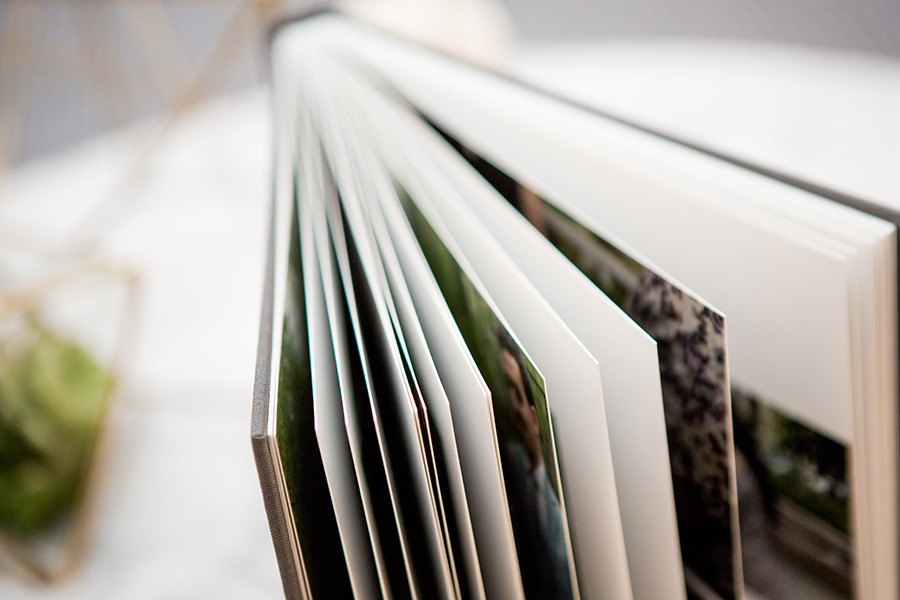
One of the key designations in the quality of paper is paper weight.
Depending on where you’re ordering your photo book, paper weight can either be measured in pounds (the combined weight of 500 sheets of that particular paper) or grams per square meter. In the US it is measured in pounds.
In most cases, thicker paper will last longer and feel better to the touch, though some lighter papers will have the same effect because of their coatings.
For a higher-quality perfect-bound photo book, it’s generally best to go with paper that weighs at least 100 lb (148 gsm). Pages that are thinner than that tend to tear easily. They also look and feel cheap. The exception is if a coating has been applied that makes the pages more durable.
For example, one blog post lists Shutterfly’s standard (perfect bound) photo at 65 lb (92 gsm). Their lay flat books are listed at 75 lb (111 gsm). The paper is light, but the pages have a coating that makes them more durable.
Flat-lay photo books are much thicker, as the pages are glued together. Since there’s no standardization in terms of paper weight or coatings, the weight stated for flat-lay paper can be indicative of either before or after the glueing.
For example, Printique lists their lustre photo pages at 216 lb (320 gsm), but this is after they’re glued together, not before. Before the glueing, they would weigh considerably less.
Many of the more economical companies don’t state the weight/thickness of their paper, but higher quality companies (i.e. Printique, Blurb, etc.) will have it listed.
Finding the information can be a bit tough, though. Still, paper weight is one of the better indications of the quality of the paper, and if paper quality matters to you, it shouldn’t be ignored.
Flush Mount Books
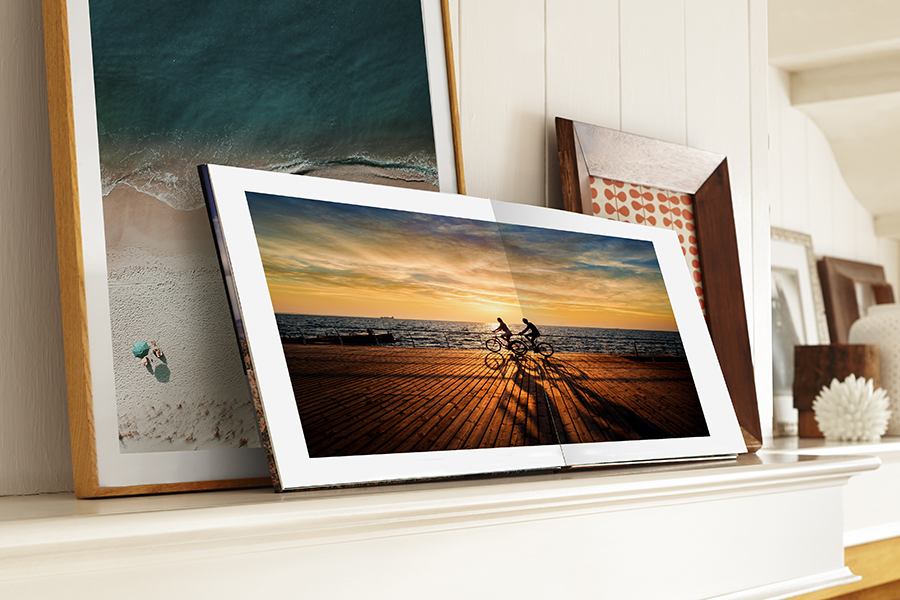
Flush mount photo books are at the luxury end of the photo book market. Think of them as the Rolls Royce of photo books.
They feature flat-lay binding, with images printed on high-quality photo paper and pages that are made from heavy paper board or card stock.
Because of the thickness of the pages, they’ll have a relatively small page count (20 to 50 pages max.) but the pages will be the best quality the photo book industry has to offer.
This makes them perfect for special occasions like weddings and heirloom albums.
However, they’re incredibly expensive, so unless you have an unlimited budget, a standard flat-lay or perfect-bound photo book will probably meet your needs just fine.
Paper Coatings
Paper comes in various weights, but it also comes in different coatings. These finishes range from deep matte to glossy/metallic and will determine much of how your images present on the page.
One way to look at it is that the range of coatings are expressing the amount of gloss on the page, with deep matte and matte being at the end with no gloss and glossy and metallic coatings offering the highest gloss.
Which coating you choose will depend on the type of photography you do and your personal taste.
Note: While the terms provided below are the most common, the coatings aren’t standardized and one company’s “matte” may be very different from another’s. Also, some photo book companies will use different terms but mean the same thing.
Matte
Matte photographic paper is a paper created from hot-pressed fibre. It has little-to-no reflectiveness and no shine (and therefore no glare). Light simply doesn’t reflect off of the page – not from the printed portions nor the unprinted areas.
High-quality matte paper will usually have excellent color reproduction, but without the color “pop” you’d find with a glossier coating. It also has less contrast than a glossy coating, though it will deepen your blacks.
This style of paper coating is more of a fine art style and is best for images that contain a lot of detail and texture.
Many find it the preferred finish for black and white photography, family portraits, more formal shots, and larger-sized pictures.
While some companies will offer completely smooth matte paper, you can also find it in various textures.
Deep Matte
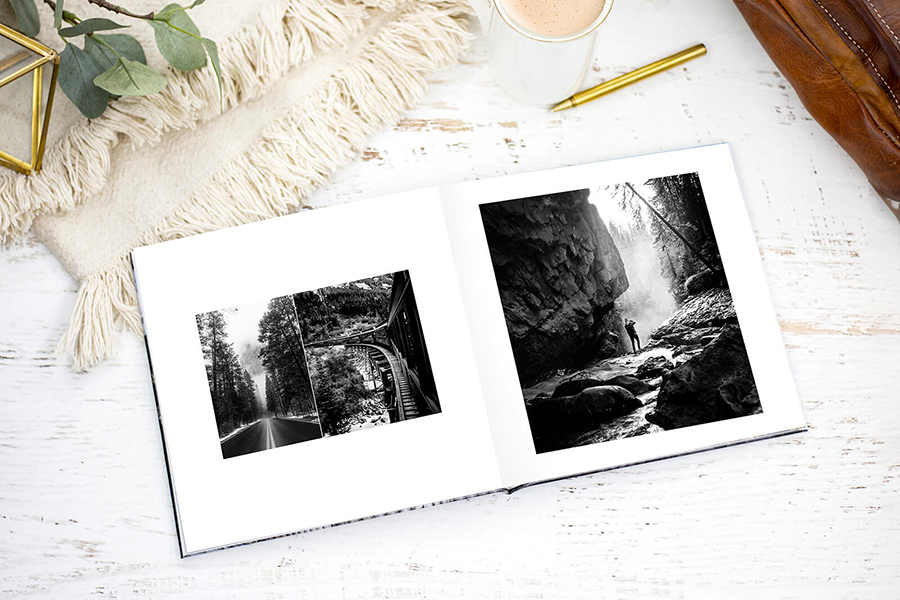
Deep Matte goes one step further away from gloss. It’s the gentlest, most muted finish available on photo paper. The colors come out natural and true, yet soft.
As with matte paper, deep matte pages have no shine or gloss added to them and therefore no reflectiveness. You won’t be troubled by any lighting issues or glare.
Deep matte is favored by fine-art photographers, as well as those wishing to convey a sense of softness and intimacy in their shoots.
Satin
Paper with a satin finish is smooth and soft, with a touch of gloss in the printed areas, but no gloss in the areas that have not been printed. It’s the most common finish for standard paper and works well in just about any setting.
Be aware though, that satin pages aren’t as durable as those with more gloss and can be somewhat susceptible to dirt and abrasion when handled without care.
For photo book companies that only offer one paper option, this will be it. In short, it’s a good general-use paper for photo books, especially for those on a budget.
Silk
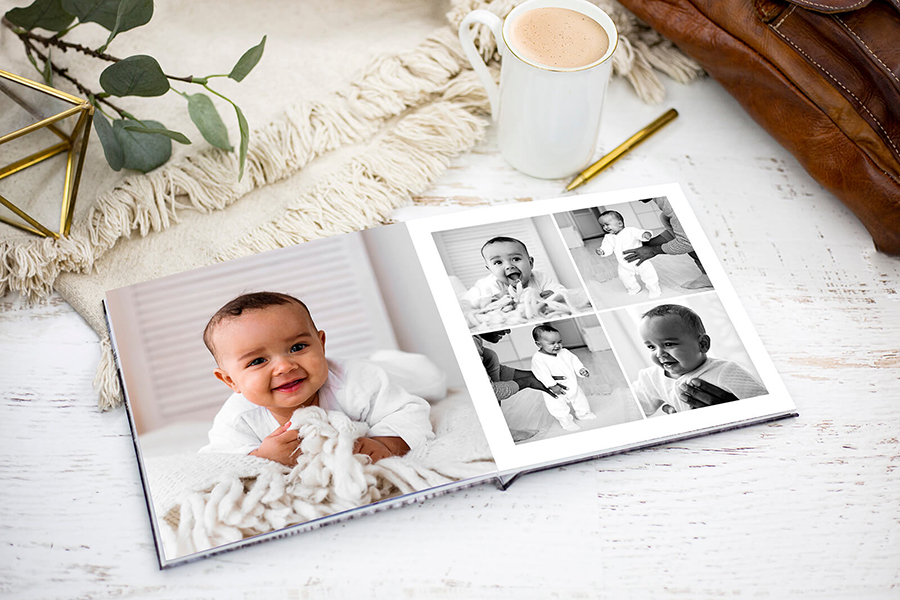
A silk coating is the next step up in gloss level. It lies squarely in between matte paper and glossy paper in terms of reflectiveness.
There is a slight sheen, which some say is similar to silk, but not enough to really create a high degree of reflectiveness.
Like a satin finish, silk is a fair option if you’re looking for something on the more affordable end of things – it’s fairly long-lasting…just don’t expect it to have a lot of punch.
Here’s where things can get a bit confusing. Silk paper isn’t necessarily the same thing as a silk paper coating. On top of that, some companies use “satin” instead of “silk” for the same or similar level of gloss.
Silk/satin finish is what’s used in the more economical photo books and may be your only choice if you’re ordering a perfect-bound book.
Luster (Lustre, Pearl, Semi-gloss)
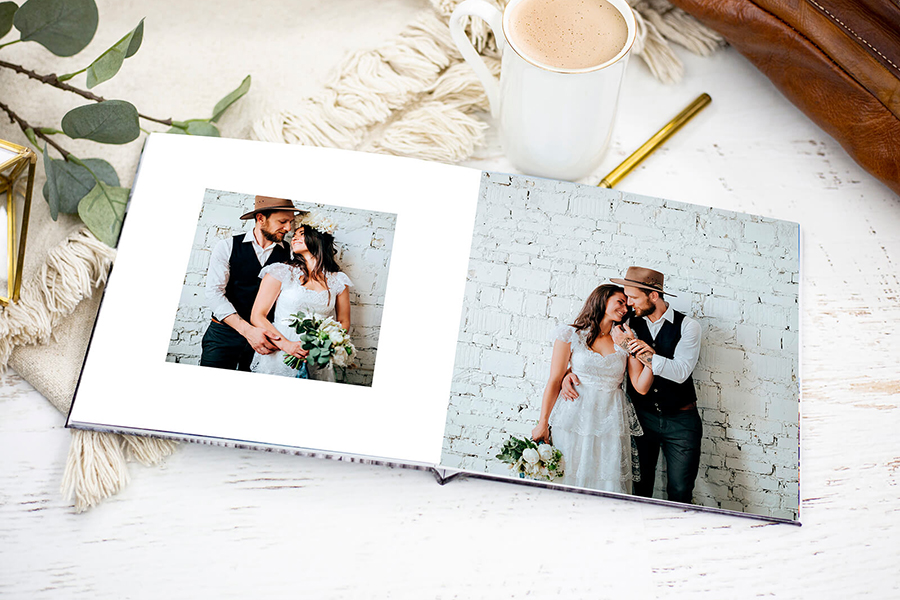
One of the most popular options out of the higher-end photo papers, luster pages have a bit more sheen than silk paper and a slightly sandy texture. The texture softens the photos just a touch, while the sheen delivers exquisite tone and color.
In terms of gloss, luster straddles the divide between matte and glossy, providing the best of both worlds. It’s not too flat, yet not glossy enough to acquire fingerprints.
A fantastic choice all-around, but especially beloved for portraits and weddings.
Glossy
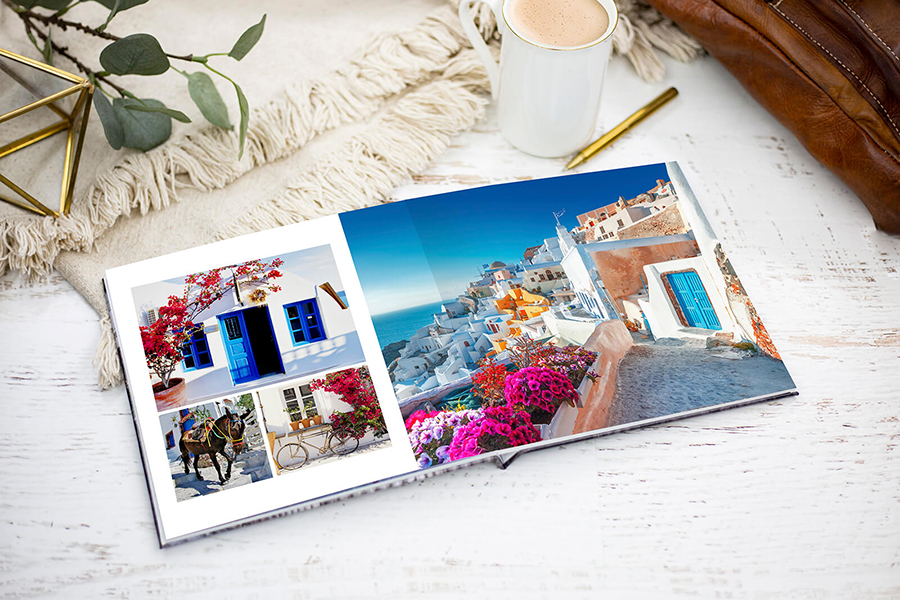
True to its namesake, glossy paper has a strong coating that shines profusely. It is completely smooth (ie.no texture) and is strongly reflective.
It’s been a bit over-used in the marketing world, yet still can’t be beaten for its color vibrancy and dynamic contrast.
Along with metallic coatings, glossy finishes offer the widest color range, highest level of contrast, and best resolution.
Some of the downsides include being difficult to see in bright light (because of its reflectiveness) and its tendency to collect fingerprints.
Otherwise, it’s a fantastic choice for any images with a bold or modern subject matter or for scenes where you want the colors to really leap off the page (e.g. underwater photography).
See our guide to matte vs glossy photos.
Metallic
Metallic is the glossiest of all the finishes. It’s smooth, extremely reflective, and makes colors jump right off the page. The surface adds in hints of yellow and silver and some say it has an almost burnished quality to it.
Like a glossy finish, metallic pages collect fingerprints and dust and are hard to make out in direct light. Still, they offer fantastically vibrant colors, excellent resolution, and super sharp images.
Note: Some companies use “glossy” and “metallic” interchangeably.
Best Photo Book Companies in 2024
These are our picks of the top companies for ordering online printing and photo books:
- Printique: fantastic quality in every aspect.
- Mixbook: best for perfect bound photo books.
- Shutterfly: great all-around service.
- Snapfish: simplified image uploading.
- Blurb: not as easy to use, but pro results and plenty of different sizing and paper options.
(See also best online printing services.)
Special OfferUse code SHOTKIT10 to save 10% on everything at Printique. Tap here to claim the discount >>
Final Words
Whether you’re a professional photographer, an amateur, or somewhere in between, a photo book is one of the surest ways to make your photography come alive.
In the end, the only real way to choose the best paper for your photo books is to order a sample swatch pack from the company you plan to use. That way you can both see how images come across and experience how the paper feels in the hand.
What do you think? Did this guide help?
Do you have a favorite company or paper you use for your photo books?

Check out these 8 essential tools to help you succeed as a professional photographer.
Includes limited-time discounts.





